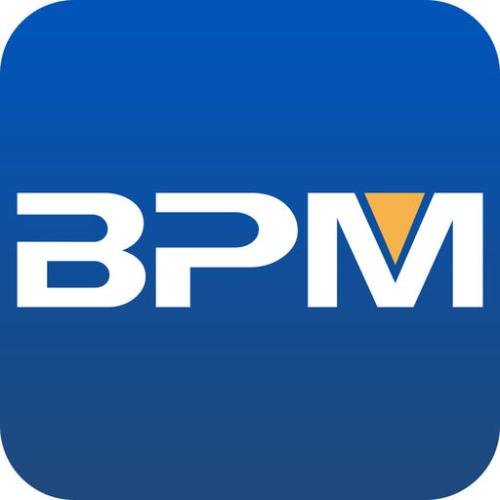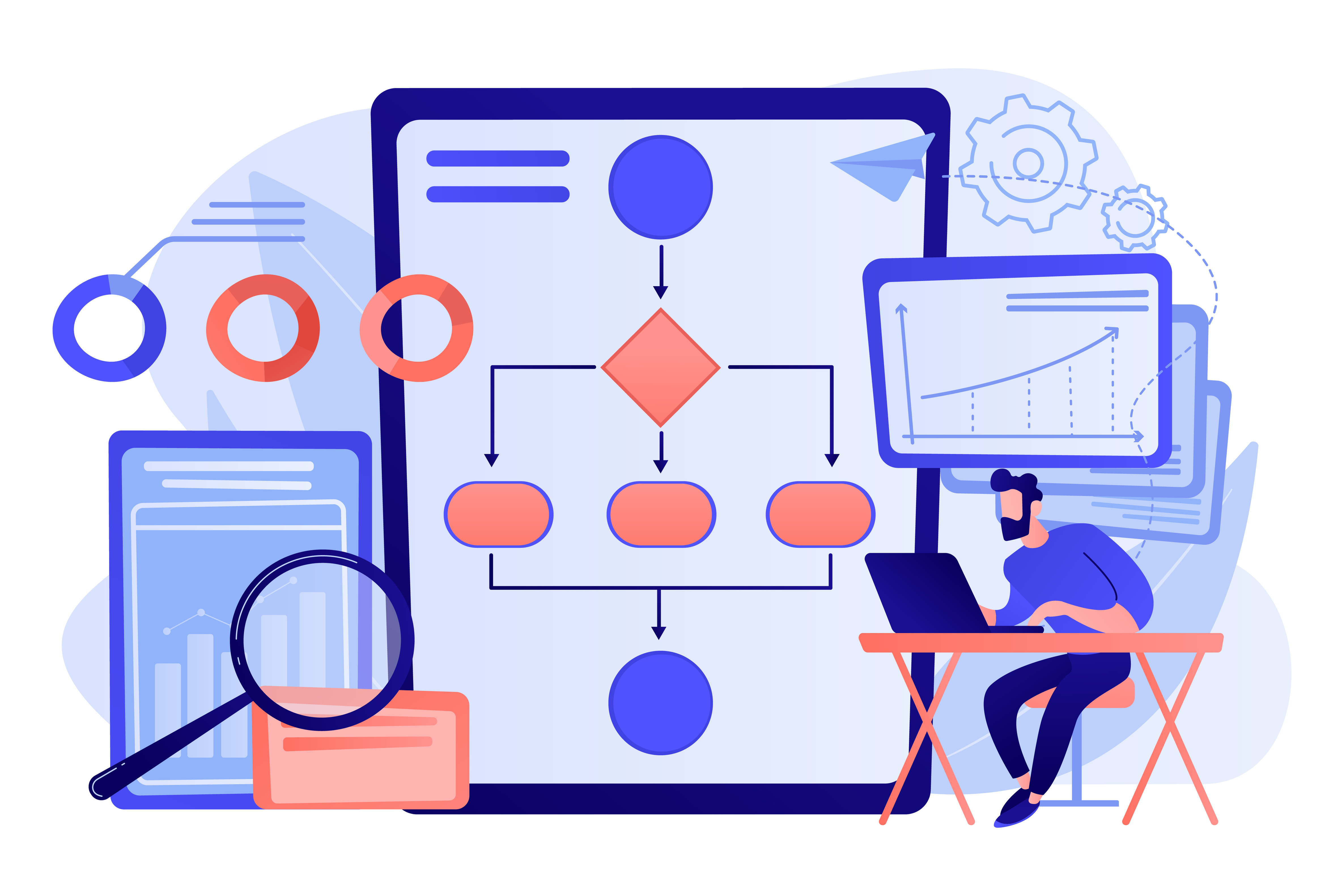When aiming to enhance productivity across your organization, you'll encounter two pivotal terms: Business Process Management (BPM) and Workflow Automation.
Choosing the right approach requires a deep understanding of their differences and respective roles within an organization.
This article will guide you through the nuances of BPM and Workflow Automation, providing insights into how each can be leveraged to streamline operations and drive organizational efficiency. By understanding these concepts, you'll be better equipped to make an informed decision that aligns with your business objectives.

What is Business Process Management (BPM)?
Business Process Management (BPM) involves a comprehensive approach to improving how work is done within an organization. It promotes business effectiveness and efficiency while striving for innovation, flexibility, and integration with technology.

A "process" refers to a series of tasks or activities that collectively achieve a business objective. For example, the process of onboarding a new employee involves steps like recruitment, documentation, training, and integration into the team.
BPM focuses on analyzing and optimizing these processes to enhance operational efficiency and align more closely with organizational goals. It could be described as a "process optimization process." It is argued that BPM enables organizations to be more efficient, effective, and capable of change than a functionally focused, traditional hierarchical management approach.
The type of BPM
BPM can be categorized into several types based on its focus and application,
Human-centric BPM focuses on processes that primarily involve human decision-making and interaction. It's used in services or tasks requiring significant manual input or judgment.
Document-centric BPM deals with processes that revolve around document handling and management, aiming to streamline the creation, modification, and routing of documents.
Integration-centric BPM is designed to automate processes that require integration between different systems and applications, ensuring seamless data flow and transactions across technological platforms.
These categories help organizations target their process management initiatives more effectively by choosing the BPM type that best fits their specific operational needs.
The core elements of BPM
Process Modeling: This stage involves creating visual representations of business processes. It serves as a blueprint, illustrating the sequence of tasks and the flow of information across the organization, enabling stakeholders to understand and analyze the current state of processes.
Process Analysis: Here, the modeled processes are critically examined to identify bottlenecks, inefficiencies, and areas for improvement. The goal is to pinpoint issues that hinder performance and to propose solutions that can enhance the process flow.
Process Execution: This phase is about implementing the redesigned processes, often utilizing BPM software to automate and manage these processes efficiently. Execution turns theoretical models and improvements into practical, operational activities within the organization.
Process Monitoring: Continuous monitoring of process performance is crucial. By tracking key performance indicators (KPIs) and metrics, organizations can assess how well the executed processes are performing and whether they are meeting set objectives.
Process Optimization: Based on insights gained from monitoring, this final phase focuses on making continuous improvements. Optimization may involve tweaking or overhauling processes to enhance efficiency, effectiveness, and adaptability to change, ensuring the organization's processes remain aligned with its strategic goals.
In essence, BPM empowers organizations to navigate the complexities of modern business landscapes. By embracing a structured approach to process management, firms can unlock unprecedented levels of efficiency, adaptability, and customer satisfaction. Through its various types and core elements, BPM serves as the backbone for continuous improvement, driving businesses towards operational excellence and strategic success.
What is Workflow Automation?
Workflow Automation emerges as a key innovator, transforming how businesses operate. By automating repetitive tasks, organizations can focus on strategic objectives, improving both performance and satisfaction.
Workflow Automation involves the use of digital tools to perform routine business processes automatically. From scheduling meetings to processing invoices, it replaces manual intervention with precise, programmatic solutions.

The Benefits of Workflow Automation
Increased Efficiency: Automation accelerates task completion, eliminating bottlenecks and freeing up time for employees.
Reduced Errors: With processes standardized, the likelihood of human error diminishes significantly.
Enhanced Scalability: Automated workflows adapt effortlessly to increasing workloads, supporting business growth without the need for additional staff.
Improved Employee Satisfaction: By removing monotonous tasks, staff can engage in more meaningful, rewarding work.
Data-Driven Decisions: Automation tools collect data that can be analyzed to inform strategic decisions, ensuring continuous improvement.
Real-world Applications
HR Onboarding: Streamlining the collection of new employee documents, scheduling training sessions, and integrating with payroll systems.
Customer Service: Automating responses to common queries, enhancing customer experience without additional resource allocation.
Accounting and Finance: Automated invoice processing and approvals, reducing the cycle time and improving cash flow management.
Workflow Automation is not just a tool but a strategic asset that can significantly enhance operational efficiency, employee satisfaction, and overall business performance. As businesses look to the future, the adoption of automation technologies becomes not just advantageous but essential.
For a deeper dive into Workflow Automation and how it can transform your business, explore comprehensive guides and resources like Yeeflow's Ultimate Guide to Workflow Automation.
Differences Between BPM and Workflow Automation
The key difference between Business Process Management (BPM) and Workflow Automation lies in their scope and application.
BPM is a comprehensive approach, focusing on optimizing entire business processes and aligning them with organizational goals. It involves strategic planning, analysis, and continuous improvement across various aspects of the organization. For example, BPM might be used to overhaul the entire customer service process, from initial contact through resolution, including multiple departments and systems.
Workflow Automation, on the other hand, is more focused on automating specific tasks within those processes to improve efficiency and reduce manual work. It often targets particular steps within a broader process, such as automating the approval steps in a procurement process, ensuring requests are automatically sent to the appropriate manager for approval without manual intervention.
While BPM aims at re-engineering processes at a macro level for strategic alignment and efficiency, Workflow Automation homes in on the micro-level, streamlining and automating specific tasks for operational efficiency.
Choosing Between BPM and Workflow Automation
When choosing between BPM and Workflow Automation, consider the scope and objectives of your optimization efforts.
BPM is suited for organizations looking to overhaul and optimize end-to-end business processes on a strategic level, integrating various departments and systems for overall efficiency. Imagine an organization seeking to enhance its entire customer service process. This could involve analyzing and redesigning how customer inquiries are received, processed, and resolved across multiple departments, ensuring each step aligns with the overall goal of improving customer satisfaction and operational efficiency.
Workflow Automation is ideal for targeting and automating specific, repetitive tasks within a broader process to streamline operations and reduce manual labor. Consider a company automating the approval process for purchase orders.
By implementing a system where purchase requests are automatically routed to the relevant managers for approval and then directly to the finance department, the company streamlines a specific task within its procurement process, reducing manual intervention and accelerating the purchase cycle.
Assessing the current state of your processes, your strategic goals, and the specific challenges you face will help determine the most effective approach for your organization.
Optimizing Organizational Efficiency with Yeeflow
For businesses navigating the complexities of Business Process Management and Workflow Automation, Yeeflow emerges as a robust solution. Its versatile platform caters to both BPM and Workflow Automation needs, empowering organizations to streamline operations and enhance productivity efficiently. With intuitive design and powerful integration capabilities, Yeeflow stands out as a strategic asset for achieving operational excellence. For a deeper exploration of Yeeflow's offerings and to see how it can transform your organizational efficiency, visit their official website and the login page for more details.
Tags
Stories




